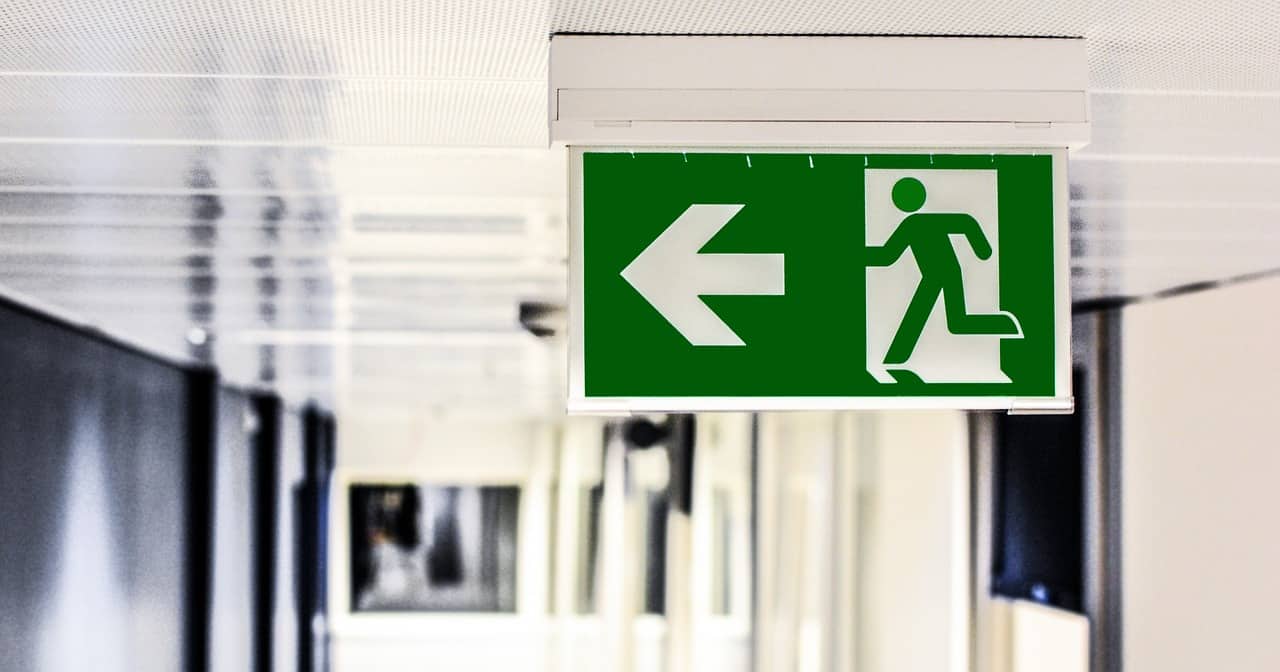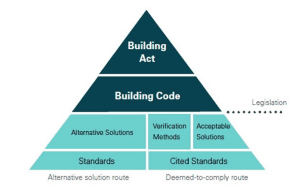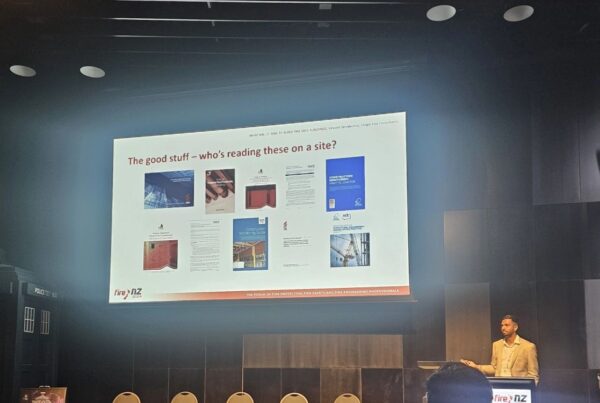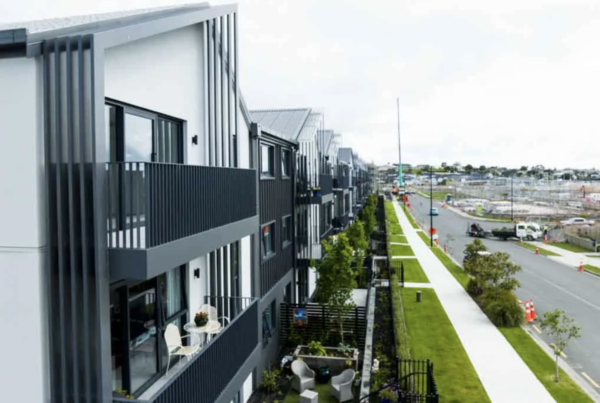Spotlight on emergency lighting
Origin provides emergency lighting design, inspection and advice to clients for a variety of projects. Emergency lighting is a ‘specified system’ under The Building (specified systems, change of use and earthquake prone buildings) Regulations 2005. It is a critical aspect of the of the health and safety of people in buildings and mandatory, where required under the New Zealand Building Code
As a specified system, emergency lighting has a compliance schedule that defines the performance standards, inspection intervals and maintenance requirements required throughout the year to ensure its continued operation. On display at a building’s entrance there should be the building owner’s Building Warrant of Fitness confirming that all of the building’s specified systems have been maintained and checked in accordance with the specific system compliance schedules.
Typically, we start emergency lighting design as soon as possible in the design phase of new building construction or the refurbishment of existing buildings. We submit all the information related to emergency lighting (and EXIT signage) to the Building Consent Authority (BCA, typically the local Council) along with all the other building documentation required. This is where the documentation is reviewed and the design is approved as complying with the New Zealand Building Code requirements.
Once Council grants a building consent an electrical contractor can begin installing the system in accordance with the design. When the building is completed the building owner becomes responsible for the operation and maintenance of all specified systems, including emergency lighting (and EXIT signage).
It’s the building owner’s responsibility to ensure all specified systems are performing correctly.
Of course, as time progresses, there’s no guarantee that what’s been installed has been properly maintained and still functions correctly. This is where IQPs (independent qualified persons) come in, checking and testing emergency lighting and exit signage. They should undertake these inspections at the interval stated on the Compliance Schedule, typically 6 monthly for emergency lighting systems. If any non-compliance is identified the IQP should provide details of this to the building owner so that the issue can be resolved.
Theirs is not always an easy job. In many instances IQPs have significant problems trying to confirm if an existing emergency lighting system is actually compliant. This is usually because the building owner hasn’t been given the mandatory emergency lighting record documentation, referred to as an ‘Emergency Lighting Operation and Maintenance Manual’ which is mandatory when using the acceptable solutions and AS 2293 to comply with the New Zealand Building Code.
This manual should be developed and provided by the electrical contractor to the building owner partum completion of the installation works. It’s a full set of ‘as-built’ records as defined in AS 2293.1 Section 8 (covering emergency escape lighting and exit signs for buildings). When construction changes have been made to the original design the ‘Emergency Lighting Operation and Maintenance Manual’ will provide the building owner with a record of the final installed system, letting the IQP undertake ongoing testing and inspection work successfully.
Below are issues that we encounter when reviewing current designs or when we’re inspecting older existing buildings:
- emergency luminaires specified as part of a design have not been AS2293 approved and therefore do not comply with NZBC F6/AS1. Non-approved emergency luminaires may not have been tested at all, or may have been tested to other non-approved standards. Currently non AS2293 tested/approved emergency luminaires are being sold throughout New Zealand.
- emergency luminaires are not specified to external parts of escape routes. We see various approved designs where this has not occurred although it is a requirement to comply with NZBC F6/AS1. Unfortunately too for some architects, there aren’t many ‘aesthetically pleasing’ AS2293 approved water ingress protected emergency luminaires available in New Zealand.
- specified emergency luminaires have been substituted during construction and these substitutes have different photometric performance and don’t comply with the approved design.
specified emergency luminaires are mounted in an incorrect location, meaning performance may not comply with the approved design.
specified emergency luminaires are mounted in locations that impede performance – for example, behind pipework or ductwork – meaning a shadow is cast and the required light output does not reach the surface that people are walking on. - commissioning the final emergency installation has not been undertaken and records of the commissioning have not been provided. This is essential information to ensure that the installation complies with the design and assist ongoing testing and maintenance.
an emergency lighting declaration is provided that confirms the installation is compliant with the approved design but no Emergency Lighting Operation and Maintenance manual has been provided.
a compliant Emergency Lighting Operation and Maintenance manual has not been provided to the building owner as part of the works. This is essential information to enable the IQP or the building owner to successfully carry out ongoing testing and maintenance.
test switch locations and operating instructions are not included in the documentation. Again, this is essential information to enable the IQP or the building owner to successfully carry out ongoing testing and maintenance. - periodic testing to confirm the performance of emergency luminaires isn’t being carried out during the typical 6 monthly inspections. Confirmation that each and every emergency luminaire perform for at least the minimum duration required by the approved design is required.
In New Zealand there are many ‘players’ involved in the implementation of emergency lighting and we all need to perform to the best of our ability to ensure we enhance the health and safety of the people using buildings that rely on emergency lighting. Here are the roles and responsibilities of each player:
- MBIE – sets the building code performance requirements and acceptable solution compliance pathways. It is also best placed to ensures the legislation governing emergency lighting in New Zealand is coordinated across organisations including WorkSafe, Energy Safety and the EWRB.
- Consultants – carry out the design. Rigorous and well documented designs help minimise any problems for contractors during the installation of the emergency lighting system.
- BCA/Council – is responsible for checking that designs comply with the building code and once a building is completed, that the necessary testing has been carried out and the operating and maintenance manuals have been provided.
- Electrical Workers Registration Board – governs the registration and training requirements for electricians. Thorough training on emergency lighting ensures that electricians can competently install the systems that are designed.
- Electricians – electricians are responsible for installing the emergency lighting systems in accordance with the design and relevant standards. A thorough understanding of the standards and the design ensures that a compliant system is installed, tested and handed over to the building owner with the correct ‘as built’ documentation.
- IQPs – IQP’s carry out the ongoing inspections of specified systems including emergency lighting to ensure that when they need to operate in earnest that they in fact work. Well trained IQPs are better placed to identify problems and defects and give quality feedback to building owners.
Clear, accurate, compliant documentation, regularly updated when testing or inspections highlight issues that result in updates and changes, is critical for the building owner and for everyone involved in ensuring the health and safety of building users is paramount. Without it, consequences can be expensive, dangerous and far reaching.




